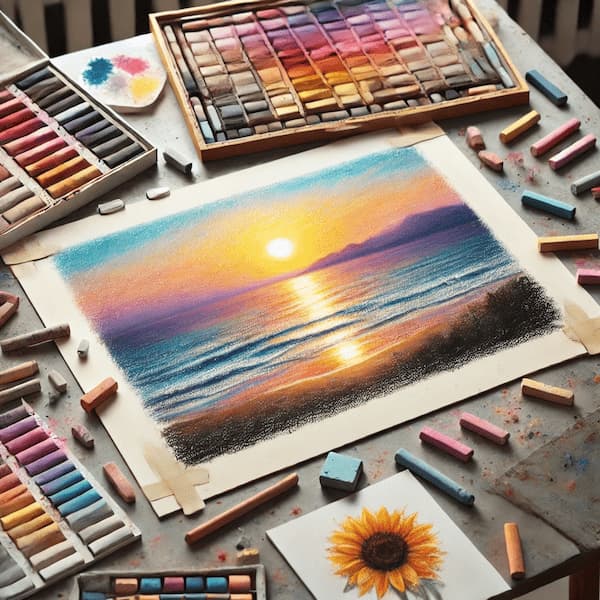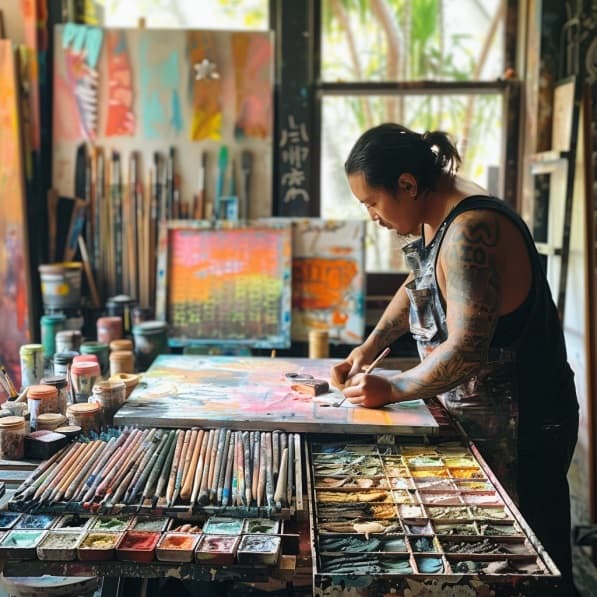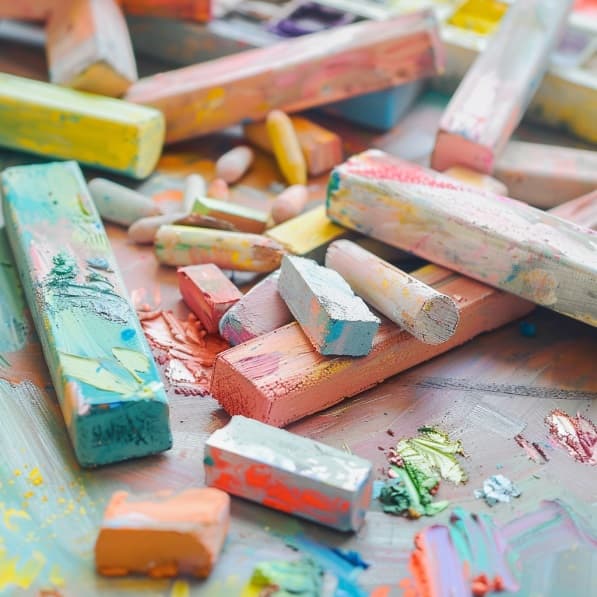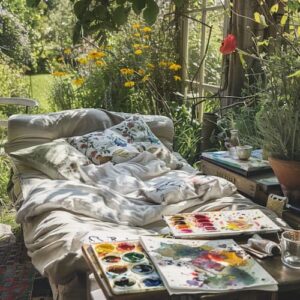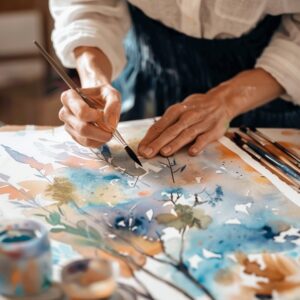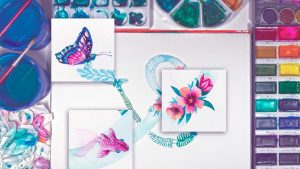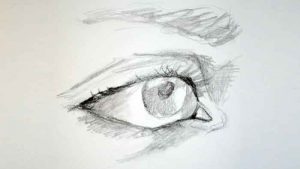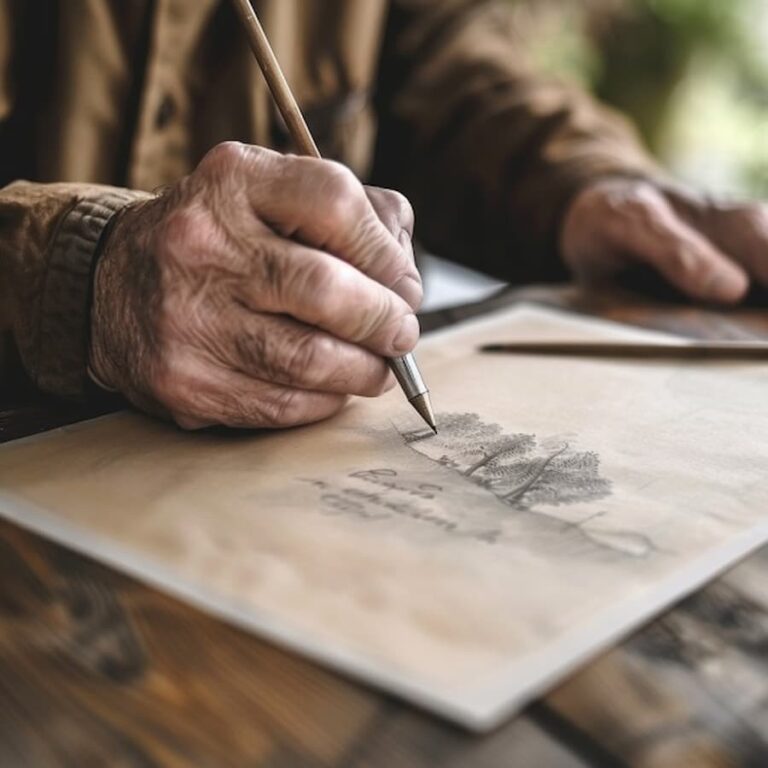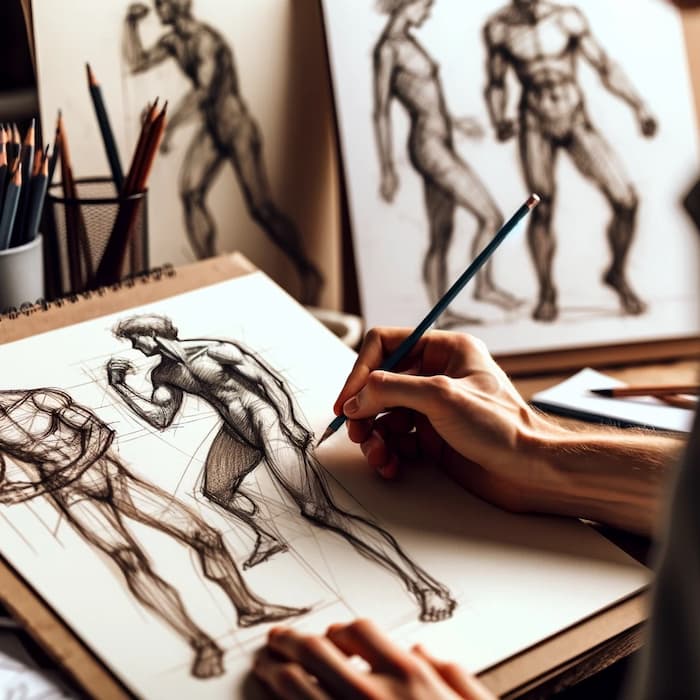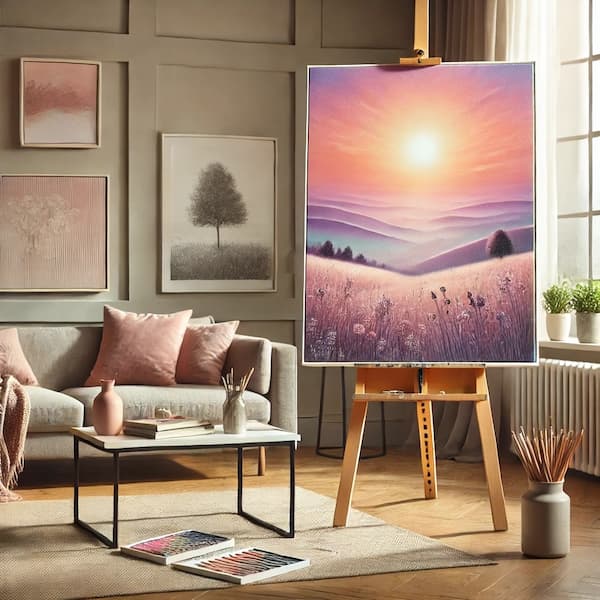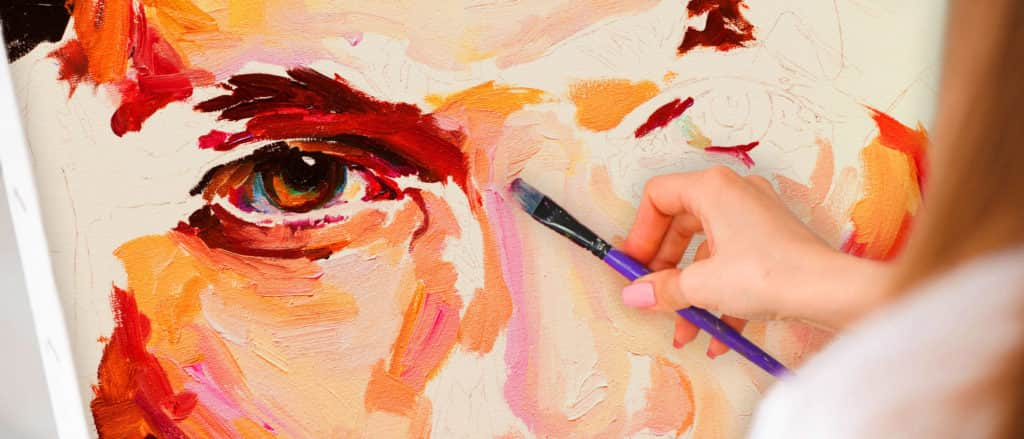Pastel painting is one of the most versatile and expressive artistic techniques.
In this article, we will explore the basics of pastel painting, from the choice of materials to the essential techniques for mastering this art.
Introduction to Pastel Painting
Pastels, known for their vibrant range of colors and textures, offer a unique experience for artists.
Unlike other mediums such as oil or watercolor, pastel combines the qualities of drawing and painting in a compact and accessible form.
But what makes pastel so special?
What are Pasteles?
Pastels are sticks of dry pigment that are mixed with a binder to hold their shape.
There are three main types of pastels:
- Dry Pastels: Include soft and hard pastels.
They are ideal for a wide range of techniques due to their ability to blend and blend easily. - Oil Pastels: Contain oils that give them a creamy texture.
They are perfect for thicker and layered effects. - Pastels in Bars: Combine characteristics of dry pastels and oil pastels, offering a balance between fluidity and texture.
Basic Principles of Pastel Painting
The first step in painting with pastels is to understand how the different types of pastels work and how they can be applied to various surfaces.
Materials Needed and Choice of Cakes
- Soft Pastels: They offer a wide variety of vibrant colors and are easy to blend.
However, their soft texture can be a challenge for beginners. - Hard Pastels: They are ideal for details and fine lines due to their firmer consistency.
- Oil Pastels: Provide a more robust finish and are excellent for layering and texturing.
Papers and Supports
The choice of paper is crucial to the success of a pastel painting.
Textured papers allow for better pigment adhesion.
Some of the most recommended include:
- Canson Mi-Teintes paper: Popular for its texture and variety of colors.
- Sand Paper: Offers a rougher texture, ideal for retaining several layers of cake.
- Pastelmat paper: Combines smoothness and texture, providing a unique surface to work on.
Other Materials
- Fixative: Used to fix the pastel and prevent stains.
- Diffusers or Tortillones: Tools for blurring and mixing colors.
- Gloves and Mask: To protect from cake dust.
Pastel Painting Techniques
Once you have your materials, it’s time to explore basic pastel painting techniques.
- Blurring Technique: Blurring is essential for creating smooth transitions and gradient effects.
You can blend with your fingers, a soft cloth, or a blender.
The key is to apply the pastel in light layers and blend to the desired softness. - Layering: The layering technique allows for depth and texture.
Start with lighter colors and work toward darker colors, applying each layer gently to avoid saturating the paper. - Texture Effects: To create texture, you can use techniques such as scratching or rubbing.
Scratching involves scraping off the top layer of pastel to reveal the color underneath.
Rubbing uses tools such as stiff brushes or spatulas to create patterns on the surface. - Color Blending: Color blending in pastels can be achieved in several ways.
One of the most common is to overlap layers of different colors and blend them.
You can also mix directly on the palette before applying to the paper.
Care and Conservation
Caring for your paints and materials is crucial to maintain their quality over time.
- Fixing the Work: Applying a fixative at the end of your work helps protect the pastel from smudging and wear.
Use spray fixatives in a well-ventilated area and with light coats to prevent colors from bleeding. - Storage: Store your paints in protective folders or frames with glass to avoid direct contact with the surface.
Upright storage is ideal to prevent pastel dust from accumulating. - Material Maintenance: Keep your cakes organized and clean.
You can use a box with compartments and a soft cloth to wipe off dust residue.
Tips and Tricks for Beginners
-Practice Light Hand
Light pressure when applying the pastel allows for smoother layers and better blending possibilities.
Avoid pressing too hard, as this can saturate the paper and make correction difficult.
-Experiment with Textures
Don’t limit yourself to using only your fingers to blend.
Try different tools such as brushes, sponges, and blenders to see how they affect the texture and appearance of the cake.
-Use Color Strategically
Choose complementary colors to create contrast and analogous colors for smooth transitions.
Experiment with color combinations to discover new palettes.
-Learn from the Masters
Look at works by well-known artists who use pastel for inspiration and to learn new techniques.
Looking at how they handle light, color, and texture can offer valuable insights.
-Keep your work area clean.
Cake dust can be harmful if inhaled in large quantities.
Be sure to work in a well-ventilated area and regularly clean your workspace.
Pastel painting offers an exciting opportunity to explore color and texture in a direct and tactile way.
With these basic principles, you’ll be well on your way to mastering this technique and creating vibrant, dynamic works of art.
To learn how to work with pastels like a real professional, knowing all its characteristics, use of materials and how to get the most out of this technique, visit our Painting Course with Lifetime Access + Workshops.
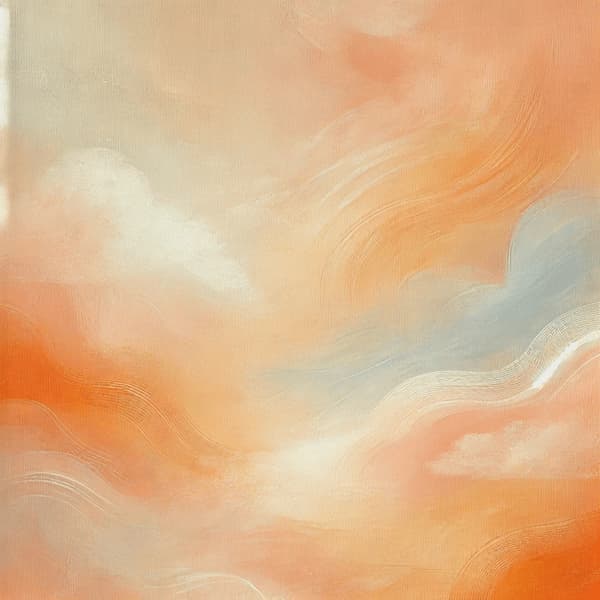
Beneficios de decorar con cuadros naranja pastel
Un color que transmite emociones positivas
El naranja pastel es conocido por evocar sensaciones de calidez, creatividad y alegría. Es un color que invita a la relajación, pero también mantiene un aire de dinamismo. Incorporar cuadros naranja pastel en un espacio puede influir directamente en el estado de ánimo de las personas que lo habitan.
Ideal para ambientes de trabajo y descanso
Uno de los aspectos más interesantes del naranja pastel es su versatilidad. Puede ser utilizado tanto en oficinas como en habitaciones o salas de estar. En un espacio de trabajo, un cuadro de naranja pastel puede estimular la creatividad sin resultar abrumador, mientras que en una sala de descanso puede promover un ambiente relajante y acogedor.
Estilo moderno y minimalista
El naranja pastel también es una excelente opción para quienes buscan una decoración moderna y minimalista. Debido a su suavidad, combina perfectamente con otros tonos neutros como el gris, blanco o beige, haciendo que los cuadros naranja pastel sean un complemento ideal para estos estilos.
Cómo elegir un cuadro naranja pastel para tu hogar
Seleccionar el cuadro perfecto puede parecer una tarea desafiante, pero con algunos consejos podrás hacer la mejor elección para cada espacio. Aquí te dejamos algunas recomendaciones:
Considera el tamaño y la ubicación
El tamaño del cuadro es uno de los factores más importantes a tener en cuenta. Un cuadro pequeño de naranja pastel puede perderse en una pared grande, mientras que una obra de gran formato puede dominar un espacio reducido. Evalúa las dimensiones de tu espacio antes de tomar una decisión.
Combina el estilo con el entorno
Es fundamental que el estilo del cuadro se alinee con la estética de la habitación. Un cuadro abstracto de naranja pastel puede ser perfecto para un salón moderno, mientras que un paisaje en tonos suaves puede encajar mejor en una decoración más clásica o bohemia.
Texturas y técnicas que destacan el naranja pastel
Los cuadros naranja pastel pueden adquirir una mayor profundidad cuando se combinan con técnicas como el impasto, que añade textura y dimensión a la obra. Además, algunos artistas utilizan pinceladas suaves y difusas para crear efectos de luz y sombra que realzan la sutileza del naranja pastel.
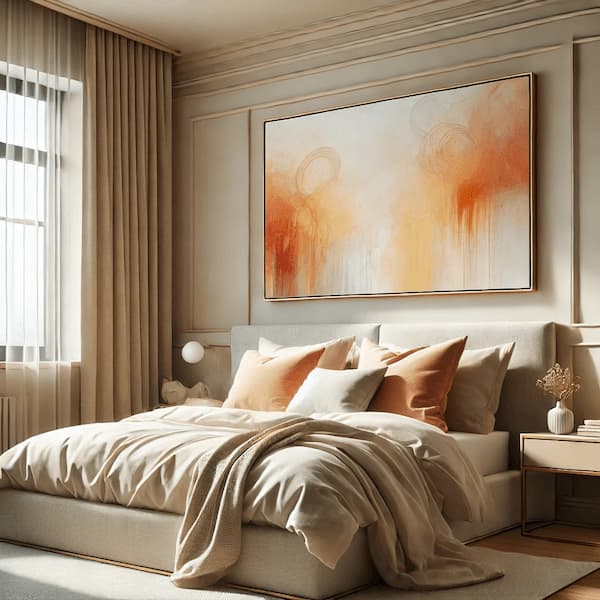
Técnicas artísticas comunes en cuadros naranja pastel
Los artistas que trabajan con el naranja pastel suelen emplear una variedad de técnicas para sacar el máximo provecho de este color. Algunas de las técnicas más comunes incluyen:
Acuarelas en naranja pastel
La técnica de la acuarela es ideal para trabajar con colores suaves como el naranja pastel. Esta técnica permite que el color se difumine de manera natural, creando transiciones delicadas y efectos de transparencia. Los cuadros en acuarela de naranja pastel son perfectos para quienes buscan una estética etérea y ligera.
Pintura al óleo y acrílico en naranja pastel
La pintura al óleo y el acrílico son técnicas más robustas que permiten mayor control sobre la saturación del color. Los artistas pueden mezclar el naranja pastel con otros colores para crear obras con más capas y profundidad. Esta técnica es común en estilos contemporáneos y abstractos.
Efectos de capas y profundidad con acrílicos
El uso de acrílicos en naranja pastel permite trabajar en capas, lo que añade volumen y textura a la obra. Muchos artistas optan por crear fondos en tonos neutros para luego superponer el naranja pastel, logrando así un contraste interesante y visualmente atractivo.
Cuadros naranja pastel en la decoración de interiores
Espacios que se transforman con cuadros naranja pastel
El impacto de un cuadro de naranja pastel en un ambiente no se puede subestimar. Desde cocinas hasta salas de estar, este color puede transformar completamente la percepción de un espacio.
Cuadros naranja pastel en la cocina
La cocina es un lugar de creatividad, y un cuadro de naranja pastel puede aportar energía y vitalidad a este espacio. Además, este color combina perfectamente con tonos neutros y madera natural, presentes en muchas cocinas modernas.
Cuadros naranja pastel en la sala de estar
En la sala de estar, los cuadros naranja pastel aportan calidez y hacen que el espacio se sienta más acogedor. Este color es especialmente útil en salas con poca luz natural, ya que ayuda a iluminar el ambiente de manera visual.
Usos en habitaciones y estudios
En estudios y habitaciones, el naranja pastel puede estimular la creatividad sin ser un color abrumador. Es un color relajante, ideal para lugares donde necesitas concentración o descanso.
Para aprender a trabajar con pastel como un auténtico profesional, conociendo todas sus características, uso de materiales y cómo sacarle el máximo partido a esta técnica, visita nuestro Curso de Pintura con Acceso Vitalicio + Talleres.

